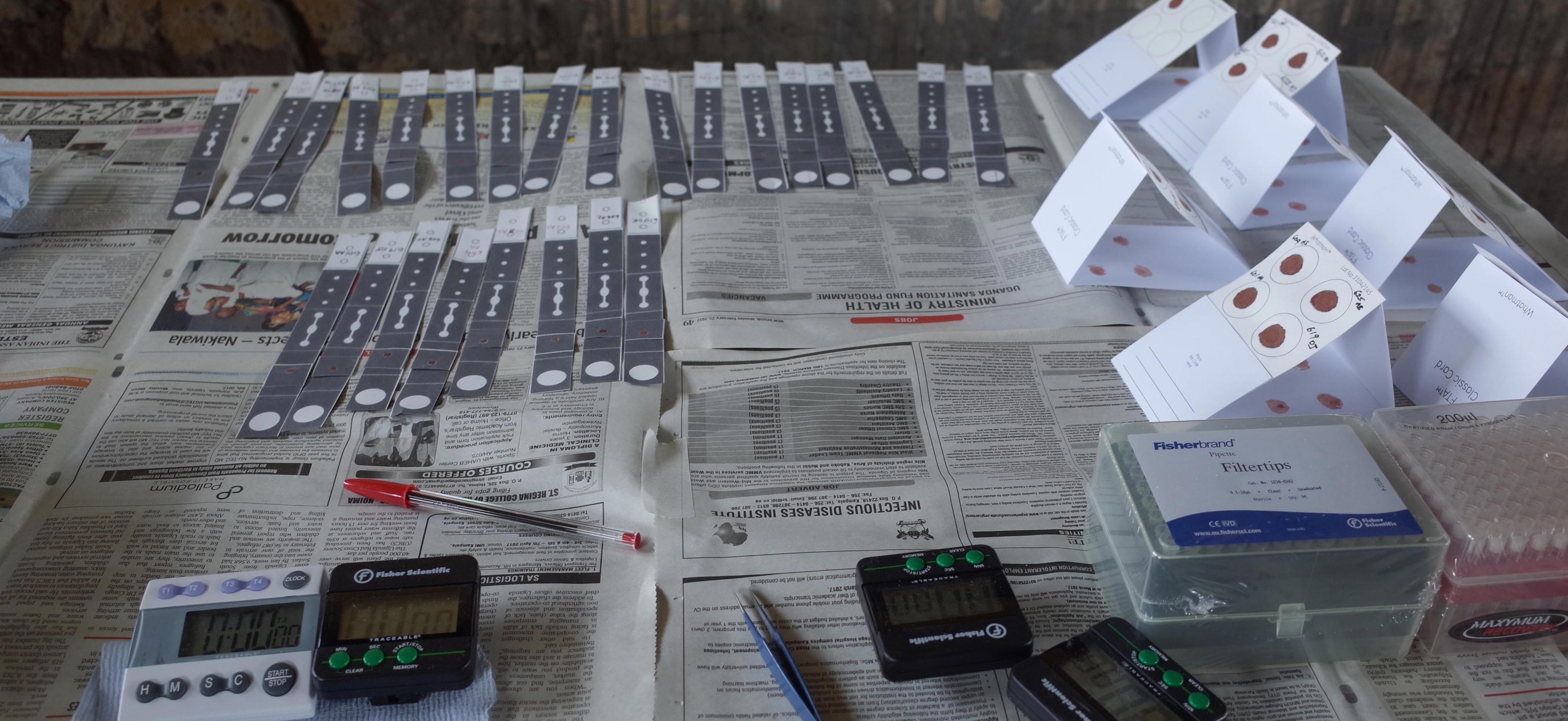Paper-based platform for pathogen detection in shrimp farms
Published: 4 February 2021
By developing and deploying a low-cost, point-of-use pathogen detection device, this project will empower small-scale shrimp farmers with the ability to identify pathogens early and respond effectively.

The aquaculture industry in South Asia, and in particular shrimp farming in India, has been growing rapidly and now has significant potential to alleviate poverty within low-income regions and communities. In these settings, farms are often small (90% of the shrimp farmers in India use <2ha of land) and are run by poor families. However, they can generate benefits across a large portion of the local population, through improved employment, increased income (from jobs associated with the industry and its supply-chain, as well as through export for example). These benefits can flow to wider community, locally, alleviating poverty.
However, these benefits are generally not realised, as the production from these farms is not sustainable, mainly due to the high frequency and impact of outbreaks of infectious diseases, which destroy crops and yield slow growth, resulting in significant impact on the farms themselves but also on the wider communities and economy. At a national level, this translates into ca. 50,000 Metric Tonne (MT) losses (ca. £1B) and loss of employment of 2.15 million man days per annum.
In this project, we will translate a novel, low-cost, battery-powered handheld platform for the early, multiplexed detection of pathogens at the farm or hatchery, to empower local farmers and communities to control and reduce the occurrence and impact of disease outbreaks. We will work with our partners Ananda (a well-established, seafood company, based in the hub of Indian shrimp farming in Andhra Pradesh), ICAR-Central Institute of Fisheries Technology, (in Cochin), Mologic (a provider of rapid diagnostic tests), Epigem (a manufacturer of low-cost devices) and the Centre for Environment, Fisheries and Aquaculture Sciences Cefas (aworld leader in marine science and technology in the UK), to design, validate and deploy the tests in the field in India.
The current diagnostic tests, which are used in India and elsewhere in South Asia, are based on nucleic acid-based detection, which takes a few hours to perform, in a well-resourced laboratory, using sophisticated equipment. This has two major consequences: (i) the tests are not available to poor farmers (the majority), either at all, or at a frequency that would allow to monitor the production reliably and detect potential outbreaks timely; and (ii) when they are carried out (e.g. at Ananda), they require the samples to be transported to where expertise is available, which leads to significant delays in results (often many days). These delays can result in mis-timed inaction (and the potential to lose the crop), emergency harvesting (leading to decreased economic output), or, in some cases, the mis-use of antibiotic or chemical treatment, which has the potential to increase drug resistance and contaminate the environment.
In this project, we will deliver a step-change in the farmer's abilty to reduce the impact of production-based losses and the burden associated with ineffective treatments. The platform relies upon the enrichment of pathogens from shrimp tissue using a combination of paper-based filtration and magnetic beads, onto a paper-based biosensor. By folding the paper, in a process akin to origami, the genetic material of the pathogens is purified and distributed into specific areas, where nucleic acids are amplified. This amplification (performed using a small hand-held heater, with low power at around 60oC, but which could also be performed in a thermos flask) is then detected using either direct visualisation of a colour change, as in pregnancy tests, or using a mobile phone to quantify the response, within 45min.
By developing and deploying a low-cost, point-of-use detection device, we will empower small-scale farmers with the ability to identify pathogens early, thus allowing them to take remedial actions as well as liaise with the community to ensure outbreaks are contained.
First published: 4 February 2021
UofG - James Watt School of Engineering
Partner Organisations
Ananda
Centre for Environment, Fisheries and Aquaculture Science (CEFAS)

